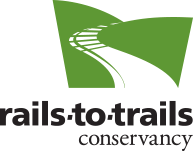How Media Habits in Bicyclist and Pedestrian Crash Reporting Blunt our Response - and How We Can Change That - Transportation Research Board
Headlines are quick hits from media outlets from Missouri and around the world. Follow the headline link for the full story. The source of this headline says:
MoBikeFed comment: The authors of this research paper have an excellent handout with key takeaways for journalists and planners:The World Health Organization characterizes traffic deaths as a preventable health epidemic. Despite the scale of the problem, this issue has not led to a concerted call to action. Why not? The field of media studies offers potential insight. Not only does media coverage help determine which issues merit attention, coverage also shapes how issues are framed. The aim of this paper is to examine local news coverage of vehicle crashes involving someone walking or biking. To that end, this paper used content analysis of 200 local news articles to answer the research questions: (1) How do articles apportion blame between vulnerable road users (VRUs) and drivers?; (2) To what extent do articles frame crashes as a public health issue? The results reveal that local news coverage tends to shift blame toward VRUs and away from drivers. Coverage almost always treats crashes as isolated incidents, obscuring the public health nature of the problem. This pattern of coverage likely contributes to the limited public outcry about pedestrian and bicyclist fatalities. Journalists can counteract these patterns by subtly altering their coverage. Planners can assist these efforts by making their expertise readily available to journalists. These simple changes would help the public identify links between seemingly isolated events and increase public pressure to reduce road deaths.
http://www.eden.rutgers.edu/~ei60/crasheshandout.pdf
Guidance for Journalists
To address these issues, we first suggest journalists be aware of the relationship between grammatical choices and perceived blame. As a test, try replacing the word “car” with the word “hammer” when describing a crash. “A person was hit by a hammer” sounds strange, as someone must have been holding it. “Hit by a car” similarly obscures agency.
Next, journalists should use public health framing when describing crashes. Linking each instance to the epidemic of VRU deaths will help bring about meaningful solutions. Finally, we advise journalists to include elements that humanize VRU crash victims when possible.
Guidance for Planners
Planners and other professionals should not assume that journalists have resources to seek their expertise. Instead, they should proactively make themselves available. To that end, planners should consider preparing a statement in advance for the eventuality that a VRU crash takes place in which they contextualize the event in the broader epidemic of VRU crashes. We encourage planners to consider the following example, and welcome them to copy it verbatim if they desire:
* While I am unfamiliar with the details of this specific crash, I can say that this is not an isolated incident. Today’s crash is just the most recent in an epidemic of crashes that claim the lives of thousands of Americans each year. To meaningfully reduce tra?c fatalities, we need to address the common denominator: road design. The U.S. road network tends to prioritize vehicle speed and flow at the expense of all other road users. We can save lives, like the life of [victim’s name], by making common-sense changes to our road network. *
Finally, in the longer term, we encourage planners to continue to advocate for road design changes that reduce auto speeds in the presence of VRUs, provide physical protection for VRUs, and encourage safe travel behavior. These might include reduced speed limits, tra?c calming measures, raised crosswalks, and protected bicycle lanes, to name just a few. Better coverage, more professional voices, and the resulting improvement in public perception of VRU crashes can work to bring about these changes and make VRUs less vulnerable.
Local
Join MoBikeFed's Advocacy Network
Working together we make a real difference! Join our advocacy network:
Related pages
Archives...
Want better bicycling and walking in Missouri?
We rely on the support of members like you. Please join, renew, or donate today.
- Home
- JOIN/DONATE
- News/Info
- Missouri Bicycling, Running, Trails
- Bicycle Skills and Safety
- Missouri Bike/Ped Law
- Clubs and Organizations
- Bike Shops
- Running Shops
- Bicycling, Running, Trails-related Businesses
- Ride, Run, Walk, Hike, Triathlon, and Events Calendars
- Bicycles on Amtrak
- Maps and Routes
- Trails and Trail Maps
- IBikeMO.org
- Planning a Missouri bicycle trip
- Gravel and Bikepacking Maps & Routes
- Bicycle & Touring Routes
- Advocacy
- Campaigns
- Our Legislative Platform
- Complete Streets
- Statewide Rock Island Trail
- Statewide Trail Vision - Quad State Trail
- Bicycle Friendly Missouri
- Walk Friendly Missouri
- Safe Routes to School
- MoDOT funding crisis
- High Priority Bike/Ped Project List
- Anti-harassment laws in cities & statewide
- Updating the basic bicycle law
- Our Vision for MoDOT
- Our Vision for MPOs/RPCs
- Our Vision for Cities & Counties
- Bicycle, pedestrian, trails plans across MO
- Protecting Vulnerable Road Users
- Vision Zero
- Missouri Trail Towns
- Store
- About


 Making Missouri a better, safer place for bicycling, walking, and trails.
Making Missouri a better, safer place for bicycling, walking, and trails.
